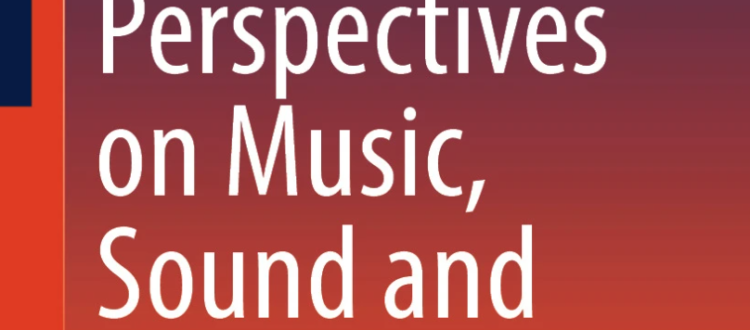Perspectives on Music, Sound and Musicology II – Sounding Images: Sights, Sounds and Sensualities I Chapters by CESEM researchers
The book Perspectives on Music, Sound and Musicology II – Sounding Images: Sights, Sounds and Sensualities was recently launched by Springer. Edited by Luísa Correia Castilho, Rui Sampaio Dias, Luzia Aurora Rocha and António de Sousa Dias, this book offers insight into different directions of research in music, covers developments in music theory and practice, and presents new techniques for analysing and designing sound.
This book is based on presentations contributed to the EIMAD — Encontro de Investigação em Música, Artes e Design conference, held at the Polytechnic Institute of Castelo Branco in 2020 and 2022 under the theme: ‘Sound Images’. Authored by researchers in musicology, musical iconography, cinema and audiovisuals, digital arts, composition, sound art and data sonification, the 21 chapters of this book offer a valuable resource and source of inspiration for professionals, researchers and the general public.
Among the chapters, it is possible to find one by Luzia Aurora Rocha, co-authored with Pilar Lorente Corisco. ‘3+2 = City, Art and Music, or Three Considerations on Two Murals by Mário Belém’ considers two murals by Mário Belém that were commissioned by two local government institutions: the Municipality of Torres Novas and the Borough of Alvalade in Lisbon. The murals share musical iconography and narratives related to local history and memory, where music plays a central role. The main goal is to question the importance given to the aesthetic beautification of urban spaces and thus approach public art as a gateway to its affirmation as a symbolic representation of power in local history, examining how this power enhances the commissioner, in this case, the political power. Music is a global language and also a form of political mobilisation of curious observers (local citizens, tourists, target groups such as new generations of voters) and public space is the privileged stage for such actions.
The editor Luísa Correia Castilho has also developed a chapter on musical iconography, ‘What Does Sound Look Like? Musical Iconography in the Quilts of Castelo Branco’. The book also includes chapters by Ricardo Vilares (‘The 1785 Antunes Harpsichord and Its Painted Imagery: An Interpretation’), Sónia Duarte (‘CHINOISERIES and “CHINESICES”: Images of Music in Sino-Portuguese Paintings from the 18th Century’), Gilberto Vieira Garcia, in collaboration with Aline Magalhães (‘An Image Out of Step: The Death Mask of Priest José Maurício Nunes Garcia in the National Historial Museum Collection (Rio de Janeiro)’), Ana Ester Tavares (‘Among Insects and Guitars – The Presence of Vanitas Elements in the Work of Amadeo de Souza-Cardoso’), Cláudia Sousa (‘Weaving Music: Music Within Portalegre’s Tapestries’), Beatriz Silva (‘Music and Opera in Chinese Propaganda Posters – The Kwok On Collection in Portugal’), Filipa Magalhães, in collaboration with Andreia Nogueira (‘Preservation as an Intertextual Practice. Addressing the Documentation of Scenic-Visual Elements in Music Theatre Performances’), Diogo Alvim (‘Score with a View – Sounding Images, Imagining Sound’), among others.

